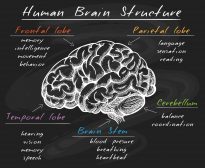Definition
noun
A muscle that contracts while another muscle relaxes
Supplement
Muscles may be classified according to the action of a set of muscles. Muscles that work together may be agonist muscles, antagonist muscles, or fixator muscles. Agonist muscles are sets of muscles in which some of them contract while others relax. They produce movements through their own contraction and are responsible for generating specific movements. In contrast, antagonist muscles are those that interfere with the physiological action of another. They eccentrically contract, i.e. slacken to lengthen the muscle so that the action of the agonist at the joint would occur.1 Fixator muscles are those that serve as stabilizers of a part of the body during the movement of another part. It allows the agonist muscle to work effectively by stabilizing the origin of the agonist muscle.
The agonist is typically the muscle that is the largest, most superficial muscle crossing the joint in motion, and is concentrically contracting or shortening the length of the muscle.1
An example of agonist muscle is the triceps brachii contracting during an elbow extension.
See also:
- antagonist muscle
- fixator muscle
Reference(s):
1 Goodwin, J. (2012). Touch & Movement: Palpation and Kinesiology for Massage Therapists. NY, US: Cengage Learning, Inc. p.38.







